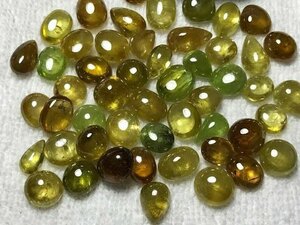-
 Retrouver dansMembres
Retrouver dansMembres Retrouver dansVidéos
Retrouver dansVidéos Retrouver dansChaînes
Retrouver dansChaînes
This website uses cookies to ensure you get the best experience on our website.
To learn more about our privacy policy Cliquez iciPréférence de confidentialité
- Mots clés - #Sphene
-
- Dernière mise à jour 27 juin 2022 0 commentaire , 201 vues, 0 comme
- Khambhat, Gujarat, India - Obtenir des directions
More from Kabeer Agate
More in Politics
Related Blogs
CHARACTERISTICS & HISTORY OF SPHENE
Corps
- NAME
The name Sphena derives from the Greek word "sfena", which means "wedge", due to its wedge-shaped crystals and is also known as Titanite due to the high presence of titanium in its structure.
- CHEMICAL COMPOSITION OF SPHENE
Esphene is a silicate of calcium and titanium, which owes its color to the presence of iron. Its range of shades varies from greenish yellow through green to brown tones. Because of its relative hardness (5-5.5 on the Mohs scale) it is a very difficult gem to cut.
- SPHENE EXTRACTION
The main deposit of Sphene is found in Madagascar, but various specimens have been found in Brazil, Canada, Mexico, Burma, Austria, Pakistan, Sri Lanka and the USA. The raw material is extracted from the parent rock, also called effusive rock.
- HISTORY OF THE SPHENE
The Sphene ore was first discovered in 1795 in Hauzenber, a forested area in Bavaria. Sphene is a relatively new gem on the gemstone market and for this reason no legend or tradition is yet attached to it.
- CHARACTERISTICS OF SPHENE
The fire (dispersion of light in the colors of its spectrum) of a Sphene is more powerful than the fire of the Diamond or the Demantoid and its intensity depends on the color of the gem: if the color is too intense, the fire of the Sphene risk not being so visible. The brilliance of a Sphene is very close to the brilliance of Diamond, called "adamantine" (similar to Diamond). Its double reflectivity causes light to break down into two components or rays that give Sphene exceptional optical depth.
Its strong pleochroism also gives the impression that the gemstone changes color. It is thanks to this property that when the decomposed light ray is seen, it shows us different colors, depending on the angle of observation.
Sphene is normally transparent and has a crystalline purity. Inclusions visible to the naked eye are rare and do not spoil the natural beauty of the gemstone.
- VARIETY OF SPHENE
A rare variety of Sphene is Sphene Capelinha , which takes its name from the city in Brazil famous for its mines. This unique lime-green variety of Sphene, also called "Chartreuse", belongs to the most beautiful and rarest quality. No more sphenes are currently being mined in Capelinha.
Photos
Carte
-
Emplacements sur MyWorldGo
Information de Lieu
- Emplacement: Khambhat, Gujarat, India - Obtenir des directions
- Adresse formatée: Khambhat, Gujarat, India
- Adresse de rue: Khambhat
- Ville: Anand
- Etat: Gujarat
- Pays: India










commentaires